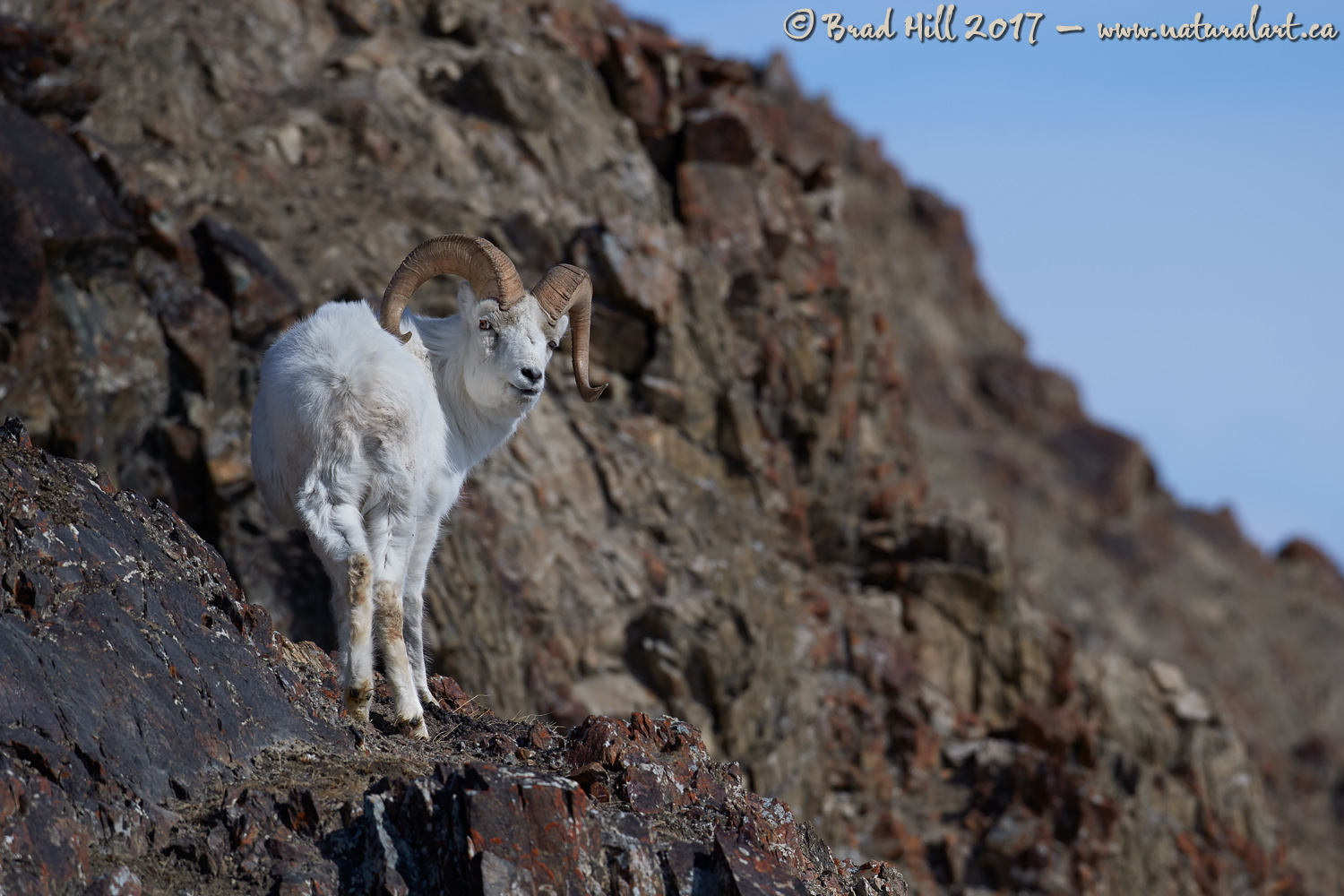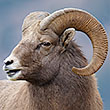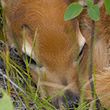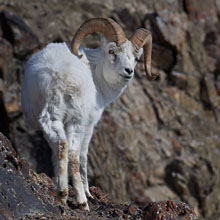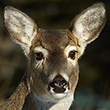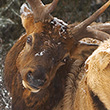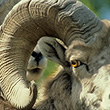Availability: Undetermined - Enquiries?
In the Field
You Comin' - Or Are You a Chicken? Southwest Yukon Territory, April 1, 2017.
I captured this image of a Dall Sheep ram on April Fool's Day in 2017 - and now I'm wondering as I write this if his "I dare you to follow me" look was his idea of an April Fool's joke directed at me! If you ever want to feel inferior and clumsy just try to follow a mountain sheep (or, for that matter, a mountain goat) across a steep, rocky mountain side! It's humbling, to say the least...
One of those most difficult things to do when teaching wildlife photography is to get the "trainee" to pay attention to multiple things at once when working with an attention-grabbing subject. It's easy to pay attention to your subject. It's harder to split that attention between your subject and everything else in the frame. And, it's even harder to pay attention to your subject, everything else in the frame, AND how the scene will look when something even harder to really see through viewfinder (the DoF and out-of-focus zones) interact to form your final image!
I'm a stickler for how out-of-focus zones are used in an image. Throwing a background out-of-focus by choosing the correct aperture can help guide the viewer's eye to the subject. But...if there are multiple out-of-focus zones in an image (which normally means out-focus-foreground, in-focus subject, and out-of-focus background) it can look too artificial and the out-of-focus foreground objects can be quite distracting. This is especially true if the foreground contains irregular objects, like rocks. In most cases I strive to have a single transition from in-focus to out-of-focus zones in an image (as demonstrated in this image). It's something that's easy to discuss and point out, but can be incredibly tough to pull off in a field situation, especially when using super-telephoto lenses. You have to know your DoF (for the lens in use), pick exactly the right aperture to shoot the image at...and position your subject within the frame very carefully. Of course, if ALL you're paying attention to is your subject (and not thinking on a couple more levels!) then you'll have to count on having a lot of luck in getting the in-focus and out-of-focus zone relationships right! ;-)
Oh...and my answer to the question in the image title? Sorry Mr. Ram, I'm not even going to TRY to follow you (and you can call me a chicken!).
Here's a larger (2400 pixel) version of this sure-footed daredevil:
• You Comin' - Or Are You a Chicken? Download 2400 pixel image (JPEG: 1.08 MB)
ADDITIONAL NOTES:
1. This image - in all resolutions - is protected by copyright. I'm fine with personal uses of them (including use as desktop backgrounds or screensavers on your own computer), but unauthorized commercial use of the image is prohibited by law. Thanks in advance for respecting my copyright!
2. Like all wildlife photographs on this website, this image was captured following the strict ethical guidelines described in The Wildlife FIRST! Principles of Photographer Conduct. I encourage all wildlife photographers to always put the welfare of their subjects above the value of their photographs.
Behind the Camera
You Comin' - Or Are You a Chicken? Southwest Yukon Territory, April 1, 2017.
Digital Capture; Compressed RAW (NEF) 14-bit format; ISO 100.
Nikon D5 paired with Sigma 500mm f4 Sport lens. Supported on Really Right Stuff TVC-24 tripod with an Acratech Long Lens Head. OS on and in "OS1" mode, with OS1 stabilization customized to Moderate View mode; AF customized to Fast Priority AF.
1/1000s @ f5.6; No compensation from "recommended" matrix-metered exposure setting
At the Computer
You Comin' - Or Are You a Chicken? Southwest Yukon Territory, April 1, 2017.
RAW Conversion to 16-bit TIFF using Phase One's Capture One Pro 10. Three raw variants (different versions of a single raw capture) processed, with the variants differing in exposure settings (0.25 stop total difference between the variants) and shadow recovery settings.
Further digital corrections on resulting 16-bit TIFF files using Adobe's Photoshop CC 2017 and Light Crafts Lightzone. Photoshop adjustments included compositing (blending) of the three output files from the raw converter, very minor exposure tweaks, and final selective sharpening for web output. Final tone-tweaking performed using LightZone's "tonemapper" tool.
Conservation
You Comin' - Or Are You a Chicken? Southwest Yukon Territory, April 1, 2017.
Species Status in Canada*: Not listed as of Special Concern, Threatened, or Endangered.
The Dall Sheep (Ovis dalli) is a species of sheep native to northwestern North America. They inhabit the subarctic mountain ranges of Alaska, the Yukon Territory, the MacKenzie Mounntains in the Northwest Territories, and both central and northern British Columbia. The more southern form is known as the Stone Sheep and is slaty brown in colour with some white patches on the rump on the inside of the hind legs. Dall sheep are found in comparatively dry country and tend to be found in a unique combination of open alpine ridges, meadows, and steep slopes with extremely rugged ground (usually referred to as escape terrain) in the immediate vicinity. This escape terrain allows the sheep to escape from predators that can't travel as fast as these sure-footed sheep. The primary predators of Dall sheep include wolves, coyotes, black and grizzly bears and, during the lambing season, both golden eagles and wolverines.
While not technically endangered in Canada this Stone Sheep was photographed in the southwest portion of the Yukon Territory - and in this region poorly regulated and poorly managed hunting has reduced many local populations by over 50% compared to historical levels. In some populations local extirpation is likely imminent if hunting practices are not radically changed or completely suspended.
*as determined by COSEWIC: The Committee on the Status of Endangered Wildlife in Canada












